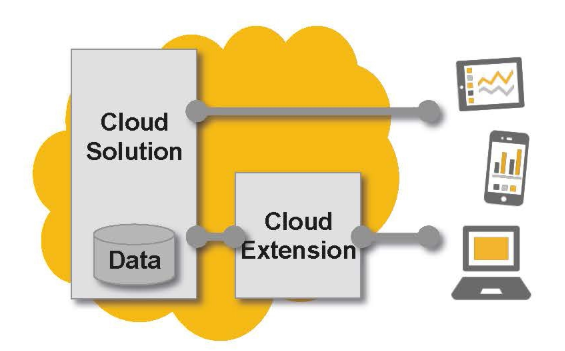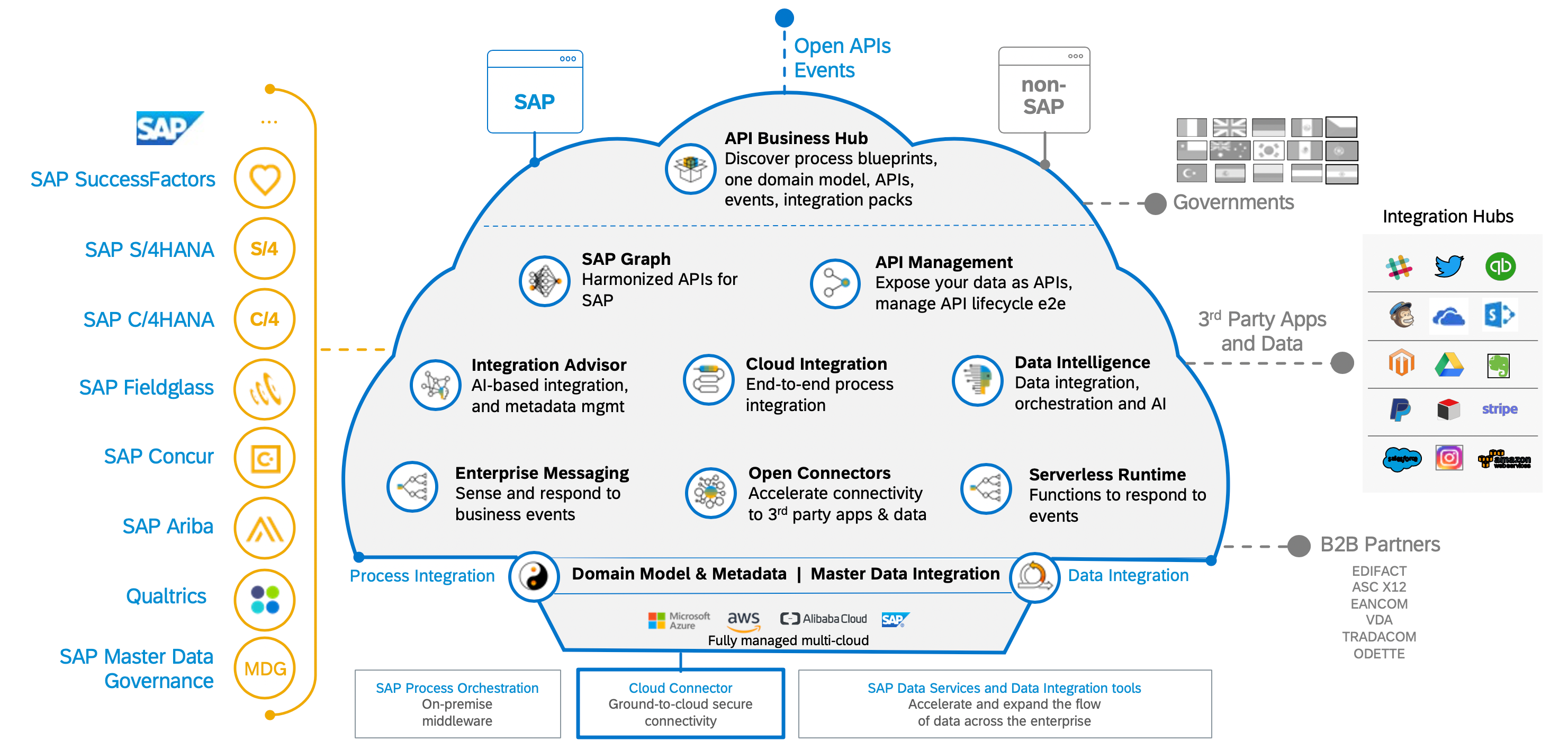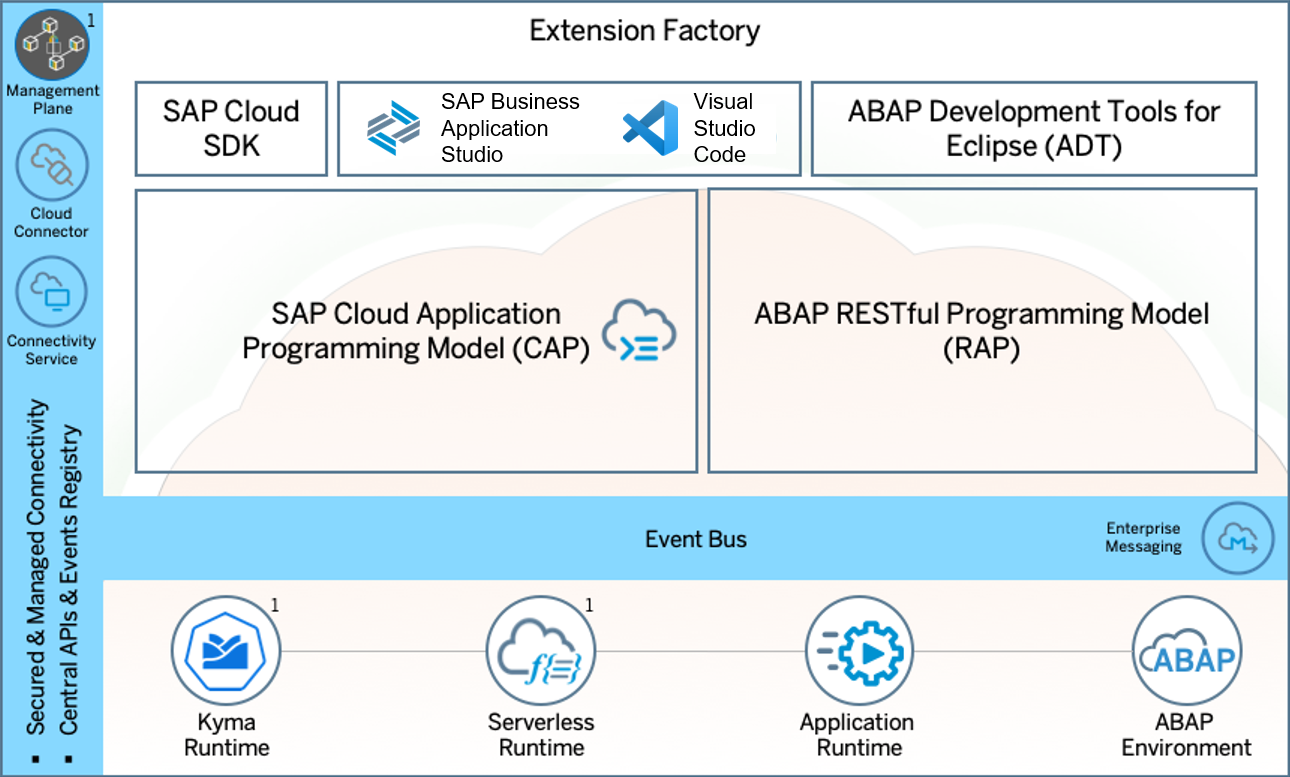Appearance
Architecture
Develop and run business applications on SAP Business Technology Platform (SAP BTP) using cloud application programming model, APIs, services, tools, and capabilities.
Be Visual!
Visualize your platform solution with the official set of icons and the MS PowerPoint slide deck, read Be Visual! Use Official Icons and Samples for SAP Business Technology Platform Solution Diagrams.
SAP Integration Solution Advisory Methodology (ISA-M) and SAP Application Extension Methodology (AEM) solution methodologies also refer on visualisation.
Community Tools
| Tool | Language | Author |
|---|---|---|
| BTP Diagram Icon generator | NodeJS | Geert-Jan Klaps |
| Creating architecture diagrams with code | Python | Antonio Maradiaga |
Skills
The wide range of SAP BTP development needs different types off developers. SAP BTP relevant roles and topics can be classified the following way (linking to further information):
Learning Curve
Some topics require a high learning curve!
Roles
In the role of a software developer, a strong education is needed behind them as there are certain elements that individuals can’t learn on their own.
Front-end Developer
Specialised in visual user interfaces, aesthetics and layouts. Skills consist of the design of user interface (UI), design of user experience (UX), CSS, JavaScript, HTML, and UI Frameworks. The major goals are responsiveness and performance.
Back-end Developer
Specialised in the design, implementation, functional logic and performance of a system that runs on a machine which is remote from the end-user. The back end is made up of microservices, that can developed using different technologies. Needed skills are Node.js and Java.
Full-stack Developer
Expected to be able to work in all the layers of the stack. New annotation driven design technologies like SAP Fiori Elements force the need for such kind of developer. They combine a relevant subset of both types and also basic DevOps knowledge.
ABAP Developer
SAP S/4HANA on any premise still needs developers, that are familar with the proprietary ABAP development language from SAP. There are a lot of tools and technologies, that are only relevant in this specialized area.
DevOps Engineer
Familiar with technologies which can build, deploy and integrate systems and manage back-end software. DevOps need experience in the following skills, Linux, Kubernetes, Docker, Jenkins and Git.
Cloud Architect
A cloud architect is an IT professional who is responsible for overseeing a company's cloud computing strategy. This includes cloud adoption plans, cloud application design, and cloud management and monitoring. They are familar with cloud environments like public cloud, private cloud, hybrid cloud and act as consultants to their organization and need to stay current on the latest trends and issues.
Programming Level
A software developer’s career ladder consists basically of three rungs. The industry applies this terminology to better understand and assign a degree of qualification, as well as determine both salary level and responsibilities.
Junior (0-3 years)Intermediate (4-7 years)Senior (8+ years)Senior Expert (12+ years)Classification of Solutions and Extensions
| On-Demand Extensions | Hybrid Solutions | New Solutions |
|---|---|---|
 Extend existing cloud solutions running in the cloud with custom extensions also running in the cloud. Extend existing cloud solutions running in the cloud with custom extensions also running in the cloud. |  Extend existing on-premise solutions running in your data center with custom extensions running in the cloud. Extend existing on-premise solutions running in your data center with custom extensions running in the cloud. |  Build new custom solutions running in the cloud. Build new custom solutions running in the cloud. |
| UDINA Connect | UDINA Commerce UDINA Variant Configuration | eClear ClearVAT |
SAP Integration Suite
SAP Integration Suite connects and contextualizes processes and data while enabling new content-rich applications to be assembled faster with less dependence on IT. Pre-built integration packs along with existing investments can be composed to deliver new outcomes with less involvement by integration experts.

If you have a classical A2A integration scenario, besides using the SAP Integration Suite (starting with 4.000,- Euro/month) to integrate services without further development, it is sometimes more efficient using custom cloud application development to implement scenarios by you own with lower total costs of ownership (TCO).
Make-or-Buy Decision
The TCO will heavily influence your system landscape architecture! To calculate the service costs, use the SAP Estimator Tool.
SAP Extension Suite
SAP BTP supports multiple environments. It features a number of tools and programming languages that increase your flexibility and freedom when developing applications. You can choose the environment that best suits your use cases and skill set and get to work. You also have the possibility to integrate applications you’ve built with other solutions by SAP.

Additional information can be found in the SAP Help Portal following the Develop path.
Environment options
Cloud Foundry
SAP BTP, Cloud Foundry Runtime is an open Platform-as-a-Service (PaaS) targeted at microservice development and orchestration.
Kyma
The Kyma Environment allows you to build simple Functions, develop and deploy more complex microservices, or mixtures of those, depending on your use case complexity level. Both Functions and microservices can act as standalone applications or extensions of these SAP systems:
- SAP S/4HANA Cloud
- SAP SuccessFactors
- SAP Customer Experience systems:
- SAP Commerce Cloud
- SAP Field Service Management
- SAP Cloud for Customer
ABAP
The ABAP Environment is a platform as a service that allows you to extend existing ABAP-based applications and develop ABAP cloud apps decoupled from the digital core. You can leverage your ABAP know-how in the cloud and reuse existing ABAP assets by writing your source code with ABAP Development Tools for Eclipse.